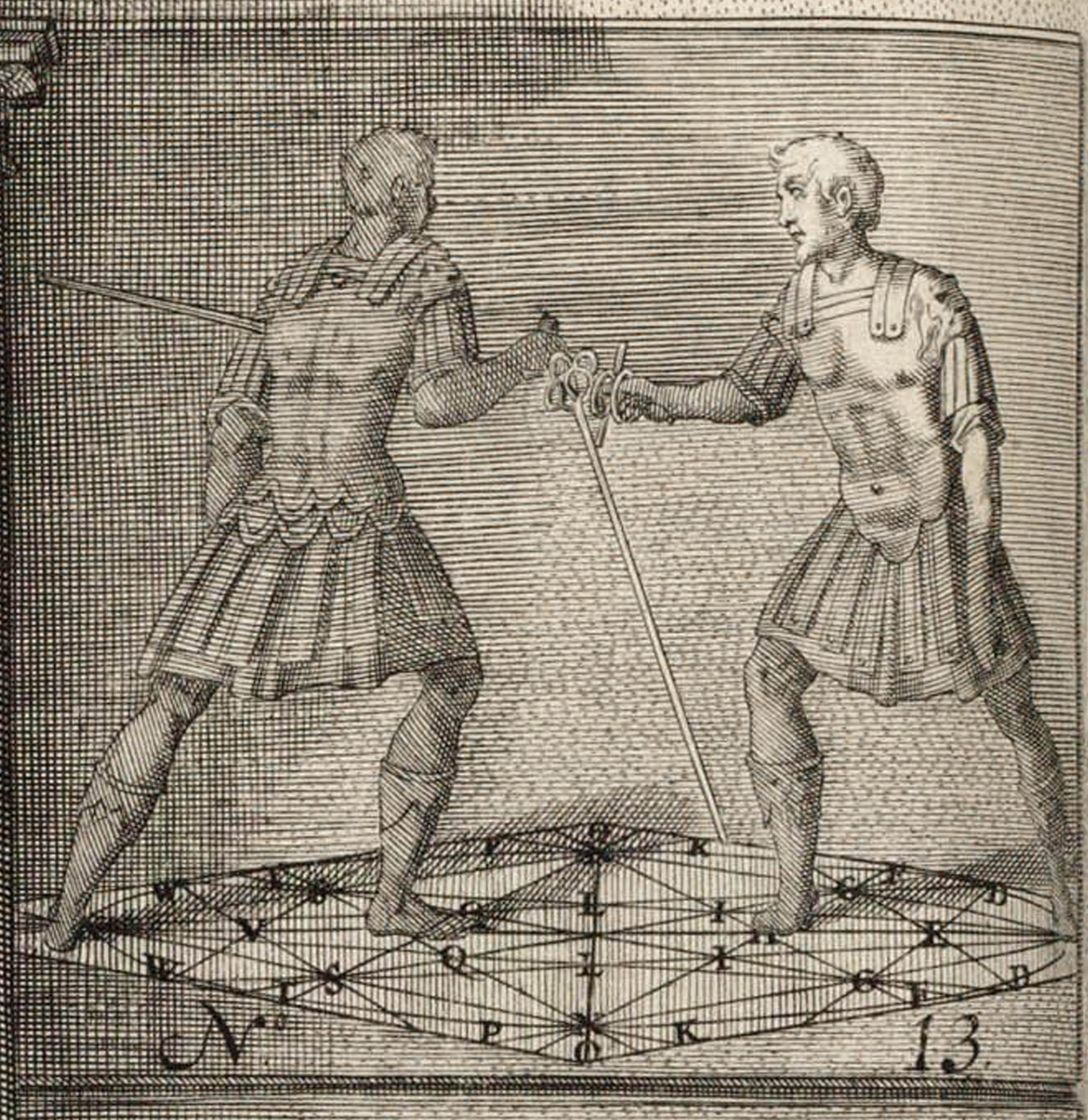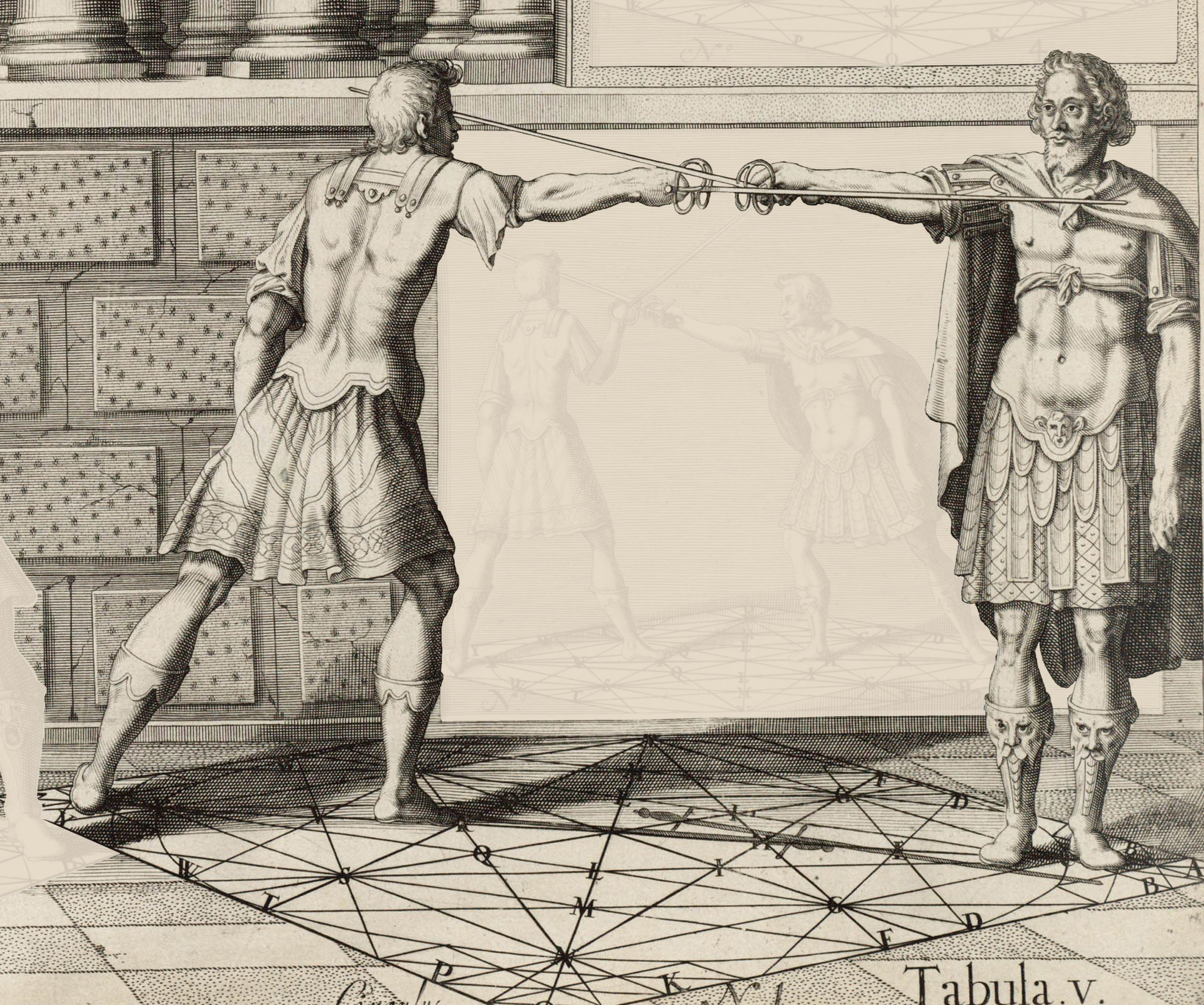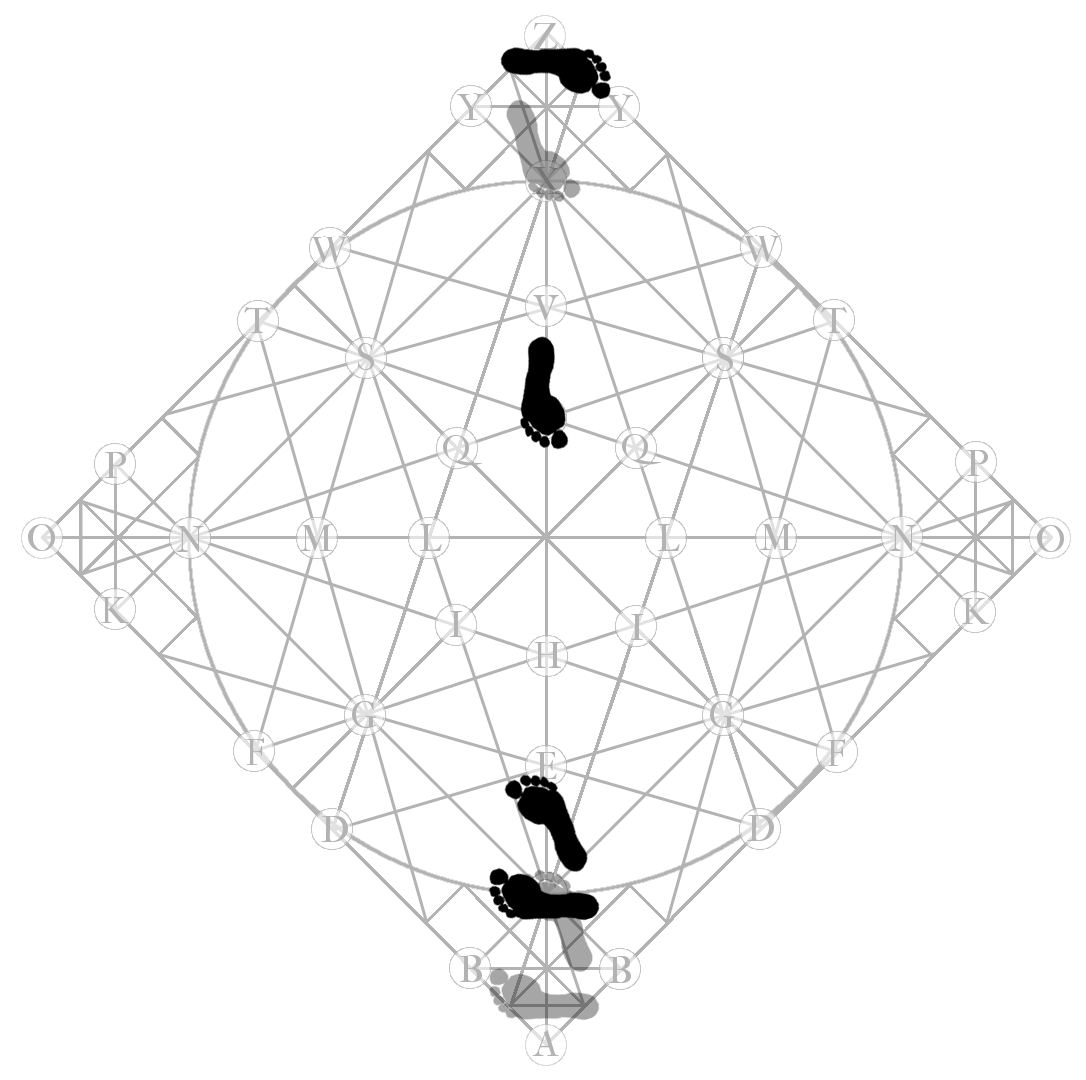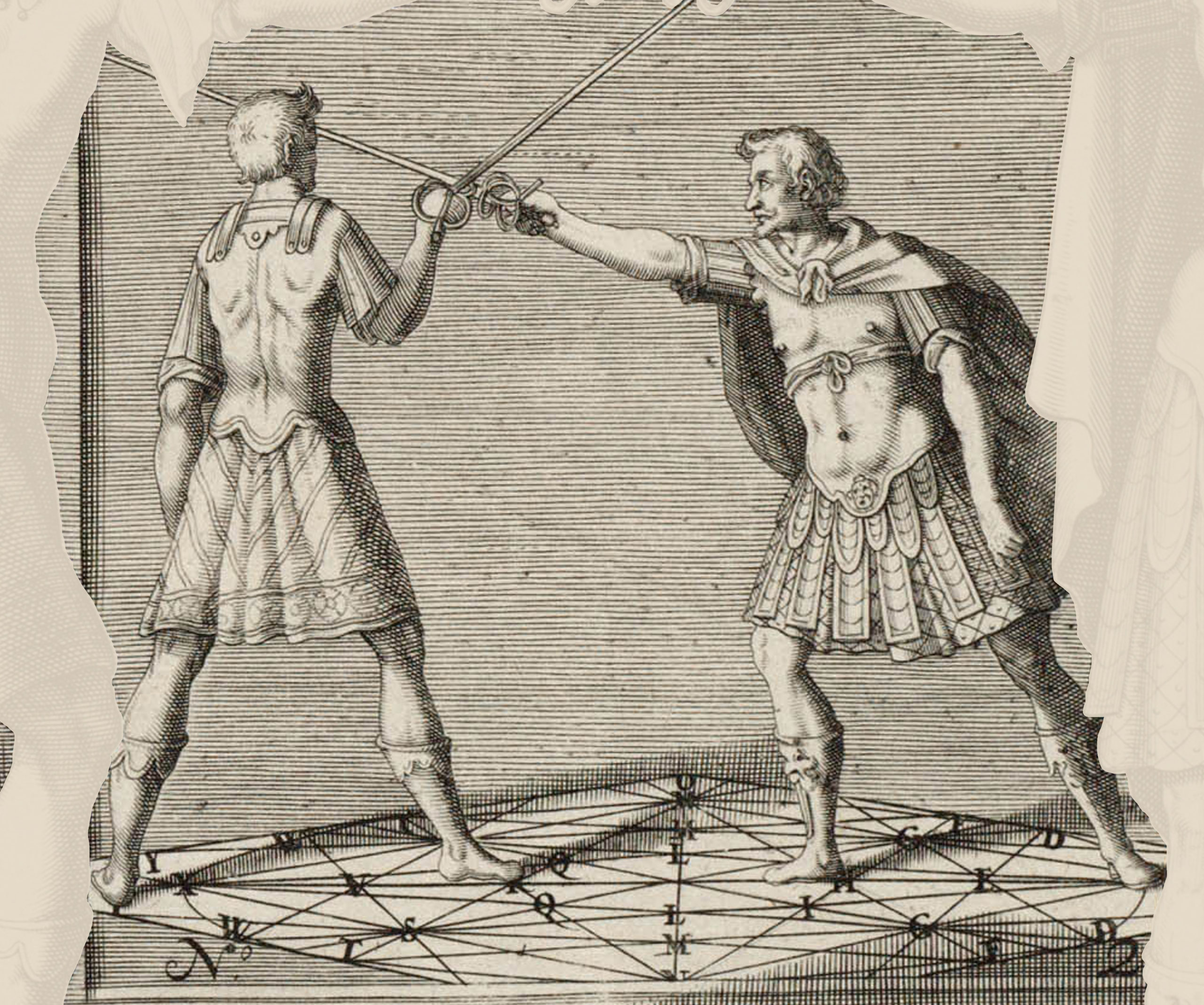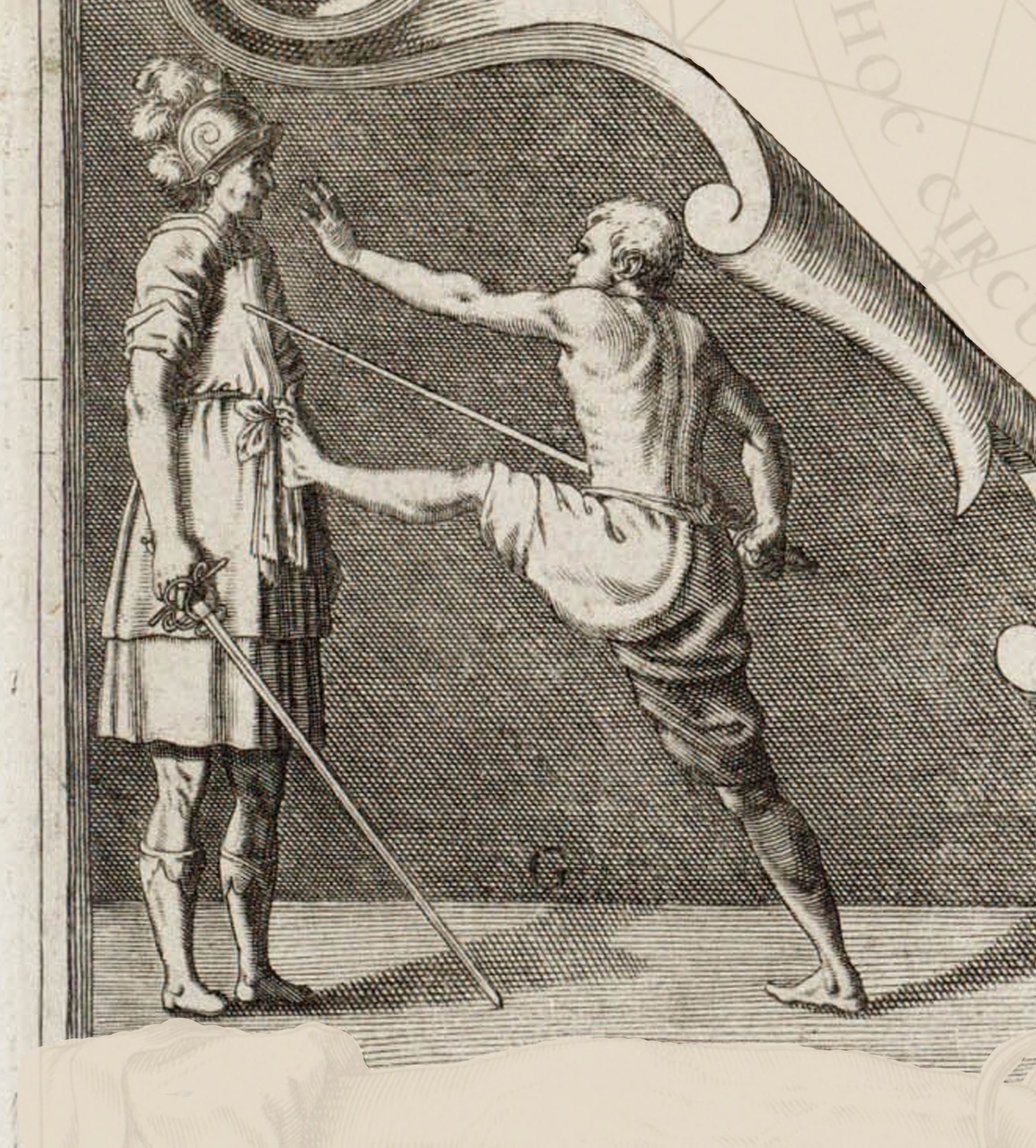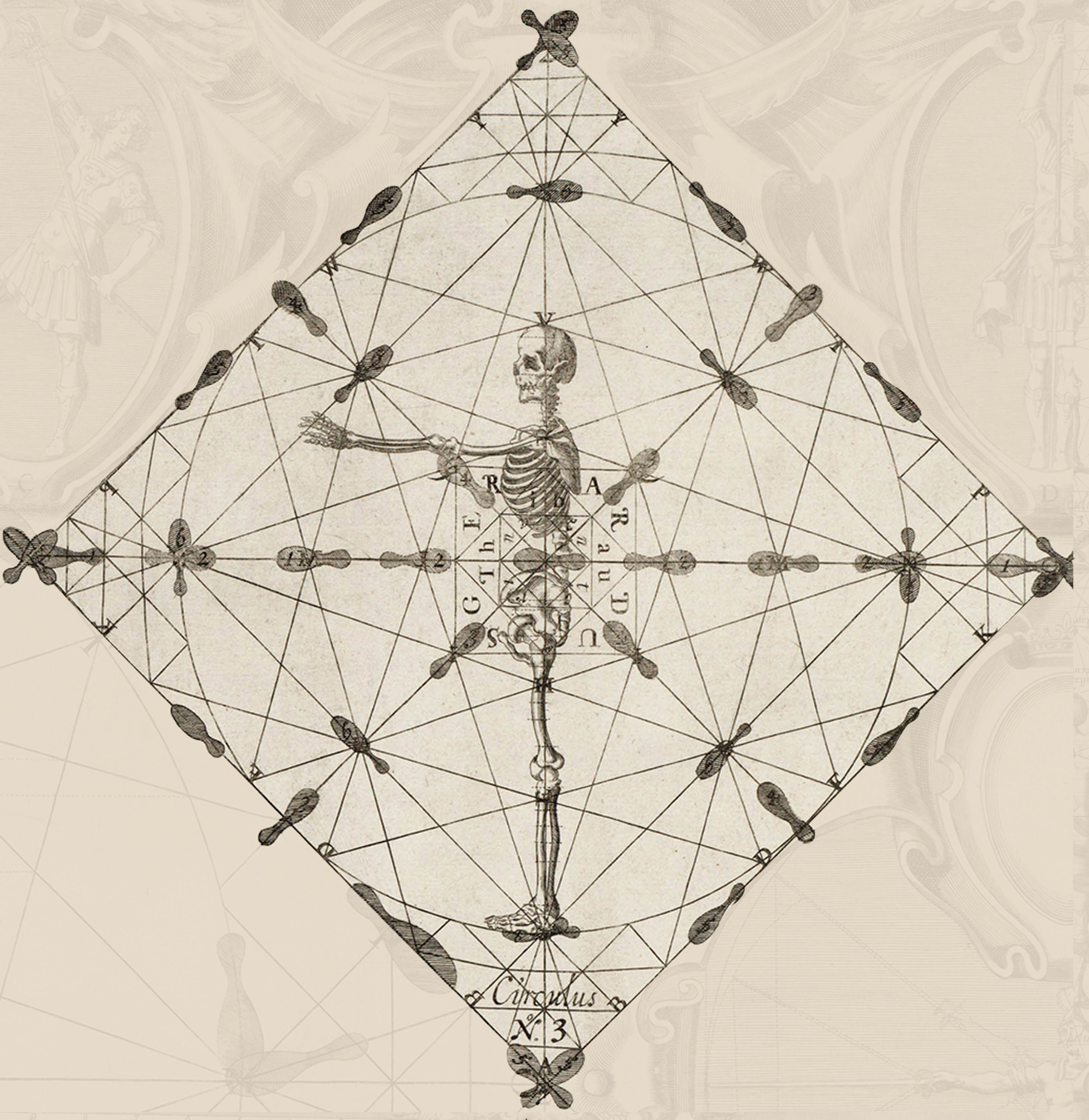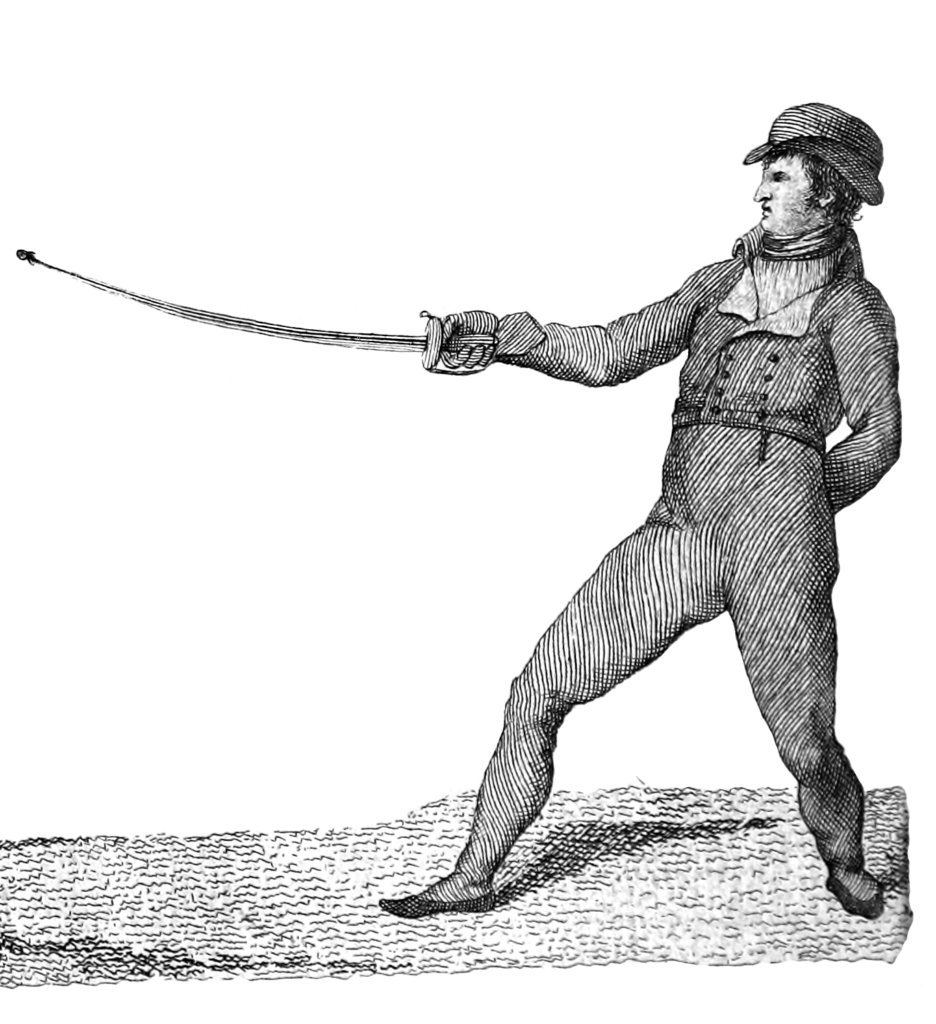Chapter 5 addresses three basic concepts:
- Categorization and response to feints
- Basic differentiation of lines
- Advantages of working from the straight line
I will write briefly about each of these concepts and then break out the exercises presented in the chapter.
Feints
Thibault categorizes feints into four types, but he only indirectly addresses how a feint should be defined. By inference from the text, I’m going to define a feint as any forward movement of the opponent’s sword (that is, a movement which brings their sword closer to you) which is not accompanied by a step with the forward foot (though it may involve an extension of that foot). Under this definition, any advancement of their sword, regardless of how much their body extends, would be considered a feint until the point where either their point extends past your elbow, or their foot commits to a step, at which point it would be considered an attack.
Thibault seems primarily concerned with making sure that our responses to our opponent’s feints are not excessive, but still prepare us to act should the feint either create a legitimate opportunity or a viable threat. To this end, his feint classification breaks down into four types, or degrees. While Thibault only defines the boundary divisions for these feints, he seems to be doing so in a way that defines the deepest point of extension at which a feint fits that particular classification. As such, and based on my own practice of the system, I am defining each type as a range which includes everything deeper than the previous boundary point, and up to the one Thibault describes. The below illustration reflects this interpretation.
All of these descriptions, you should assume that the actions appropriate to the previous type of feint have already been taken and that what is being described is a continuation of those actions.
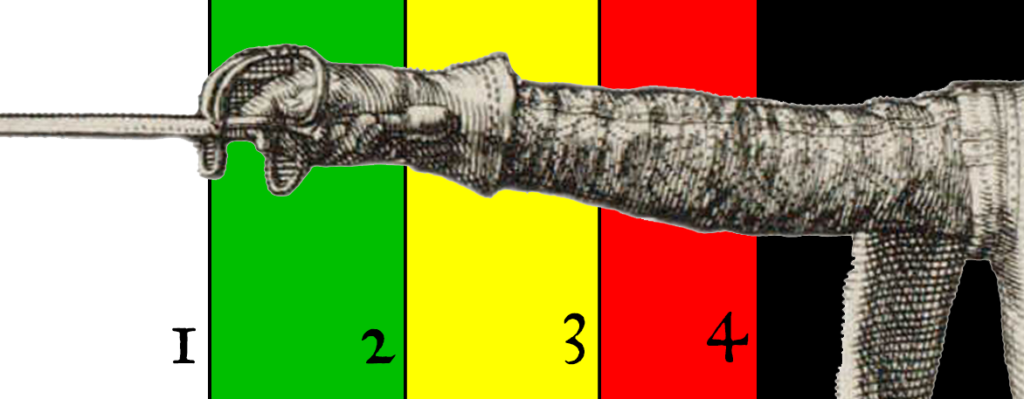
Type 1:
Cue: The forward action does not bring the opponent’s point past your guard. It may be accompanied by a change of balance in the feet.
Response: No action. In Thibault’s words, “despise it, and make no movement at all against it, neither of the arm nor of the sword, until the enemy comes closer.” (Thibault – 2005)
Type 2:
Cue: The point of the opponent’s sword passes your guard, to as far as the break of the wrist. This will likely be accompanied by a small advancement of their shoulders.
Response:
- Ready the sword-arm and hand
- Tense the body
- Raise the heel of the forward foot
- Raise the point of the sword and incline it toward the opposing sword
Type 3:
Cue: The point of the opponent’s sword passes your wrist to as far as the middle of your forearm. This will require a larger movement of the shoulders.
Response:
- Extend the body
- Raise the right foot
- Rotate the sword hand to lower the inside quillion and raise the outside quillion. This should also have the effect of raising the point of the sword so that it forms an obtuse angle with your opponent’s sword
Notes:
- This is still a defensive response. Any further advance of the opponent’s sword should be met with an offensive response.
- Thibault calls this feint response a “universal response” regardless of how your opponent follows up their feint.
Type 4:
Cue: The point of the opponent’s sword extends as far as your elbow. Thibault notes that this is the largest feint that can be done without your opponent completing a step.
Response: Counter-attack before your opponent’s feint can be completed.
Differentiation of Lines

Thibault uses three basic lines, which are centered on the sword arm. The high lines, those which can be struck by directing a blow above the arm, are divided into the inside line (the side of the arm closest to the front of the body) and the outside line (the side of the arm closest to the back of the body). The low line, any part of the body which can be struck by passing below the opponent’s sword is treated as one single line.
These differentiations are key to understanding where attacks are originating from and what kind of responses they require.
Advantages of working from the Straight Line:
In this chapter, Thibault is using “straight line” to refer to the position of the sword both horizontally, and vertically. All of the exercises focus on the idea of holding your defense closer to the center of the axis (represented by your sword side shoulder) than your opponent’s sword, forcing them to have to work around the position that your blade is in. This gives you an advantage of reach and speed. It also means that, should your opponent change lines of attack, your movement to shift from covering one line to covering another line is smaller than it would be if you weren’t holding the straight line.
Thibault breaks the chapter down into three basic sections:
- Defending against attacks to the inside line.
- Defending against attacks to the outside line.
- Defending against attacks to the low line.
Exercises
All exercises begin at First Instance with Zachary’s sword below Alexander’s.
Section 1 – Attacks to the Inside Line:
Exercise 1: Circles 1 and 2
Summary:
- Zachary executes a type 3 feint in Alexander’s outside line.
- Alexander readies and cover, per the type 3 response.
- Zachary disengages to Alexander’s inside line and thrusts to Alexander’s face in second intention, stepping with both feet.
- Alexander shifts his defense to the inside line, collecting Zachary’s thrust on his hilt, and thrusting to Zachary’s face with a small advance.
- Alexander completes his thrust, executing with rigor.
Exercise 2: Circle 3
Summary:
- Zachary executes a type 1 feint in Alexander’s outside line with an advance of the rear foot.
- Zachary disengages to Alexander’s inside line and begins a thrust to Alexander’s face.
- Alexander waits until Zachary’s sword passes the middle of his forearm, covers to the inside to collect the thrust, and counter-thrusts to Zachary’s face with an advance of his feet.


Section 2 – Attacks to the Outside Line:
Exercise 3: Circles 4 and 5
Summary:
- Zachary executes a type 1 feint in Alexander’s inside line.
- Zachary disengages to Alexander’s outside line and begins a thrust to Alexander’s face.
- Alexander waits until Zachary’s sword passes the middle of his forearm, covers to the outside to collect the thrust, and counter-thrusts to Zachary’s face with an advance of his feet.


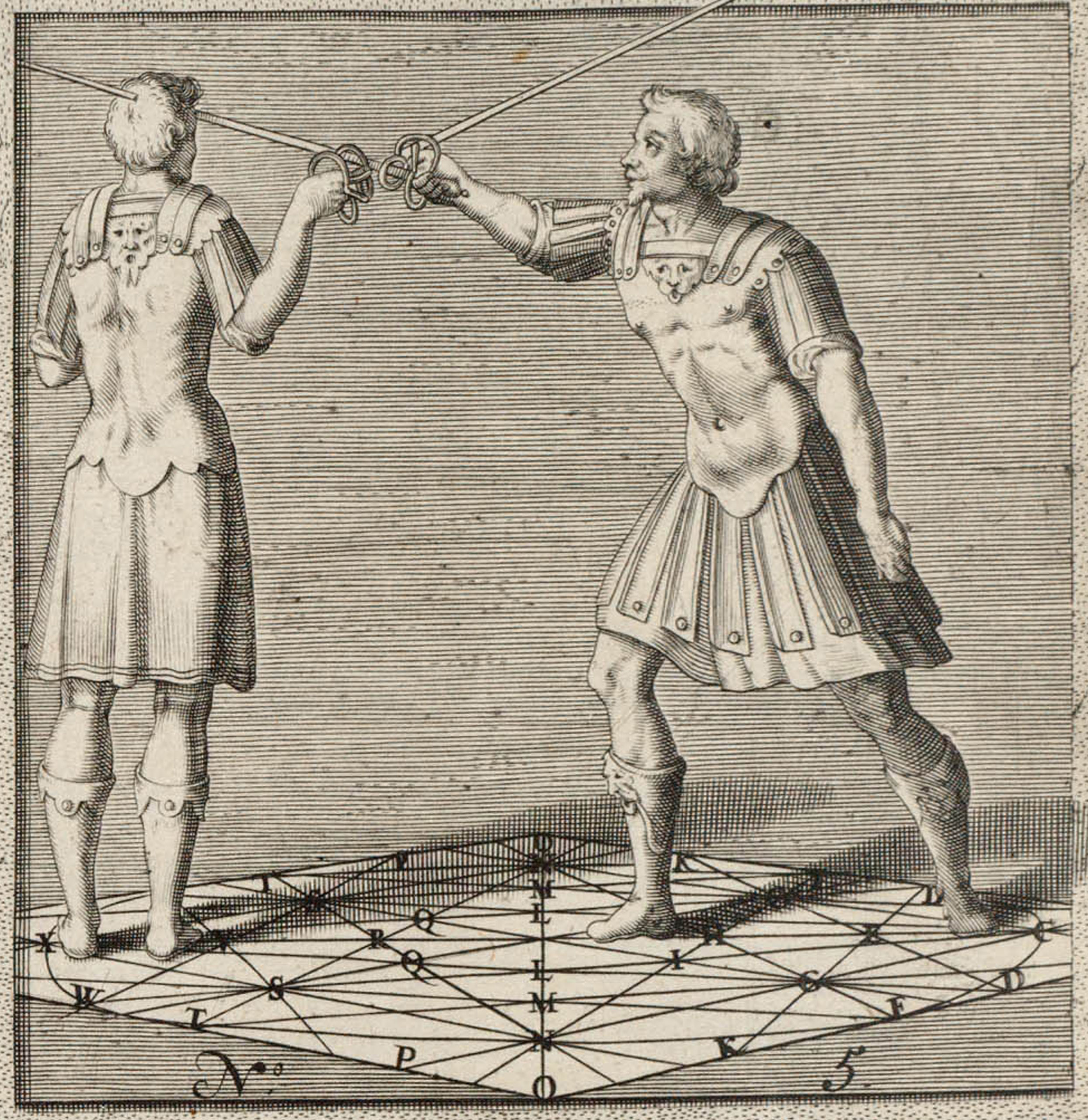
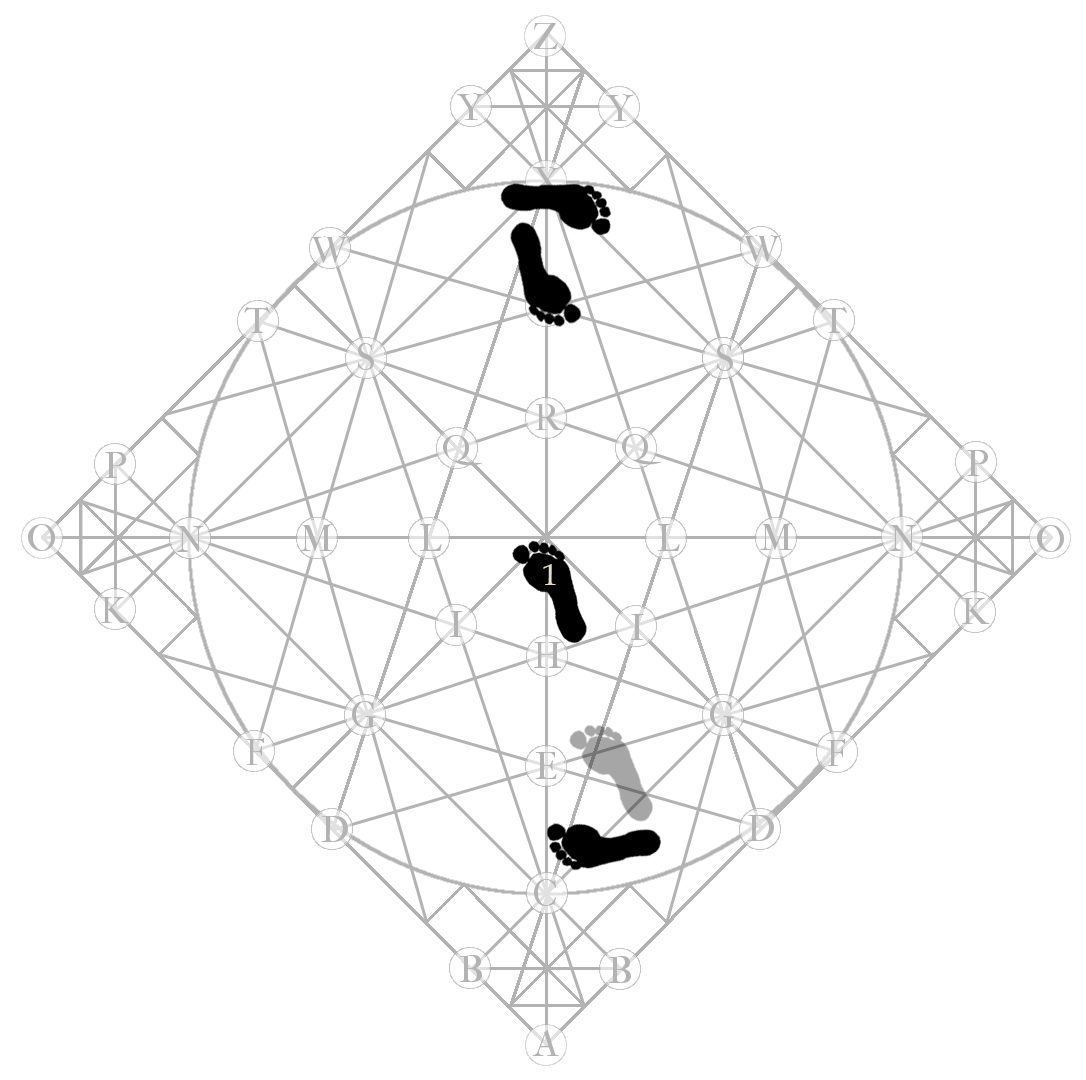
Exercise 4: Circles 6, 7, and 8 (variation 1)
Summary:
- Zachary executes a type 2 feint to Alexander’s face from the inside line.
- Alexander readies himself against the feint.
- Zachary disengages to Alexander’s outside line and begins a curved arm thrust (palm up) to Alexander’s face.
- As Zachary finishes his disengage, Alexander collects the thrust with his elbow against his own flank, and passes his left foot forward, voiding his head away from the thrust.
- Alexander executes a beat to Zachary’s parried blade, and, breaking the engagement, thrusts Zachary to the flank, then executes with rigor, making another advance of the left foot.






Exercise 5: Circles 6, 7, and 8 (variation 2)
Summary:
- Zachary executes a type 2 feint to Alexander’s face from the inside line.
- Alexander readies himself against the feint.
- Zachary disengages to Alexander’s outside line and begins a curved arm thrust (palm up) to Alexander’s face.
- As Zachary finishes his disengage, Alexander collects the thrust with his elbow against his own flank, and passes his left foot forward in a large step, voiding his head away from the thrust, delivering a beat mid-step, breaking the engagement to deliver a thrust, executed with rigor, all in the same step.





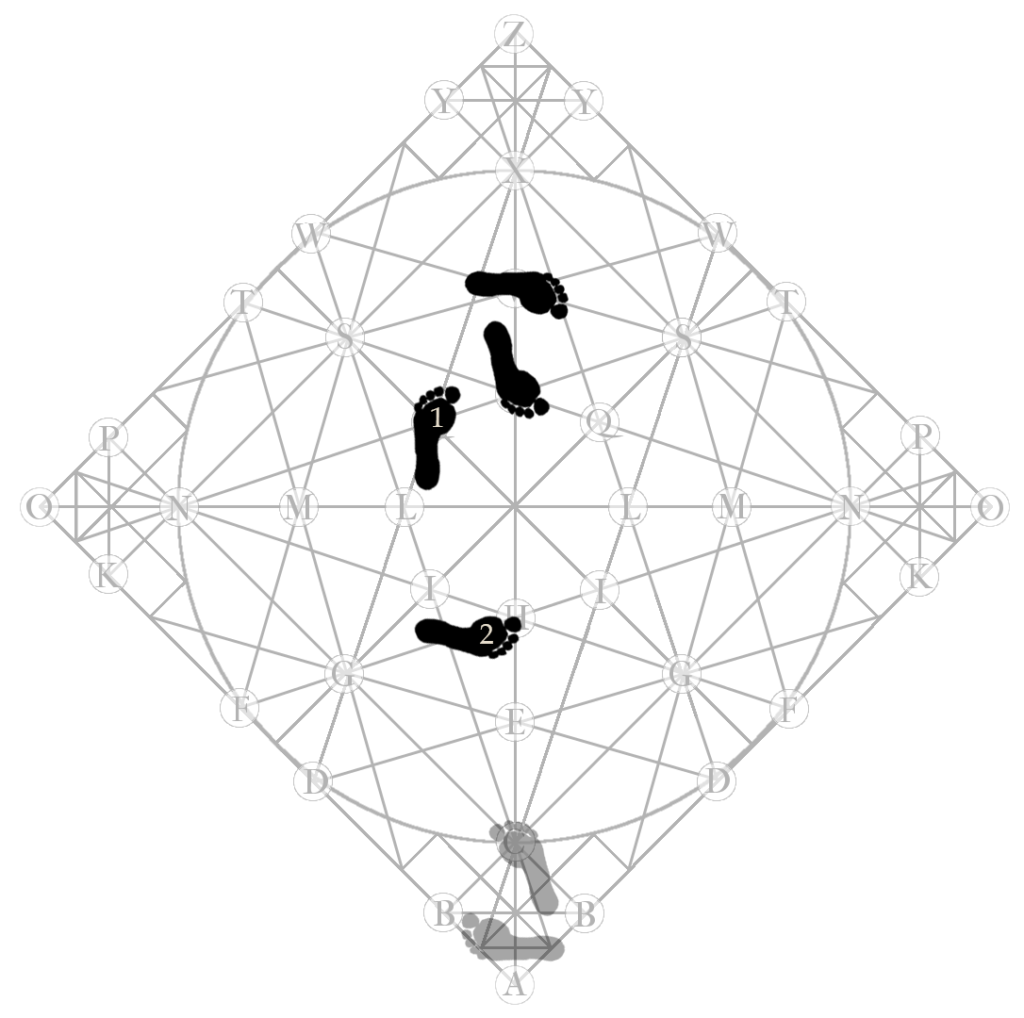
Exercise 6: Circles 6, and 8 (variation 3)
Summary:
- Zachary executes a type 2 feint to Alexander’s face from the inside line.
- Alexander readies himself against the feint.
- Zachary disengages to Alexander’s outside line and begins a curved arm thrust (palm up) to Alexander’s face.
- As Zachary finishes his disengage, Alexander collects the thrust with his elbow against his own flank, immediately advancing the right foot and voiding his head to the left.
- Alexander passes his left foot forward in a large step, delivering a beat mid-step, breaking the engagement to deliver a thrust, executed with rigor, all in the same step.



Section 3 – Attacks to the Low Line:
Exercise 7: Circle 9 (variation 1)
Summary:
- Zachary executes a type 2 feint outside of Alexander’s arm.
- Alexander, responds and covers the feint.
- Zachary disengages to Alexander’s low line, continuing his step and attempts a low line thrust to Alexander’s belly, exposing his sword shoulder.
- Alexander, squares his body, pulling his hips back and, letting his shoulders extend forward, delivers a stop thrust to Zachary’s forward shoulder before Zachary’s foot can land.


Exercise 8: Circles 9 (variation 2) and 10
Summary:
- Zachary executes a type 2 feint outside of Alexander’s arm.
- Alexander, responds and covers the feint.
- Zachary disengages to Alexander’s low line, continuing his step and attempts a low line thrust to Alexander’s belly, exposing his sword shoulder.
- Alexander, as Zachary’s foot begins to land, draws his right foot back, squaring his body.
- Alexander draws his hips back and lets his shoulders come forward pushing his hilt down onto Zachary’s sword, pushing Zachary’s sword into an acute angle.
- Alexander passes forward with his left foot and thrusts Zachary to the face.

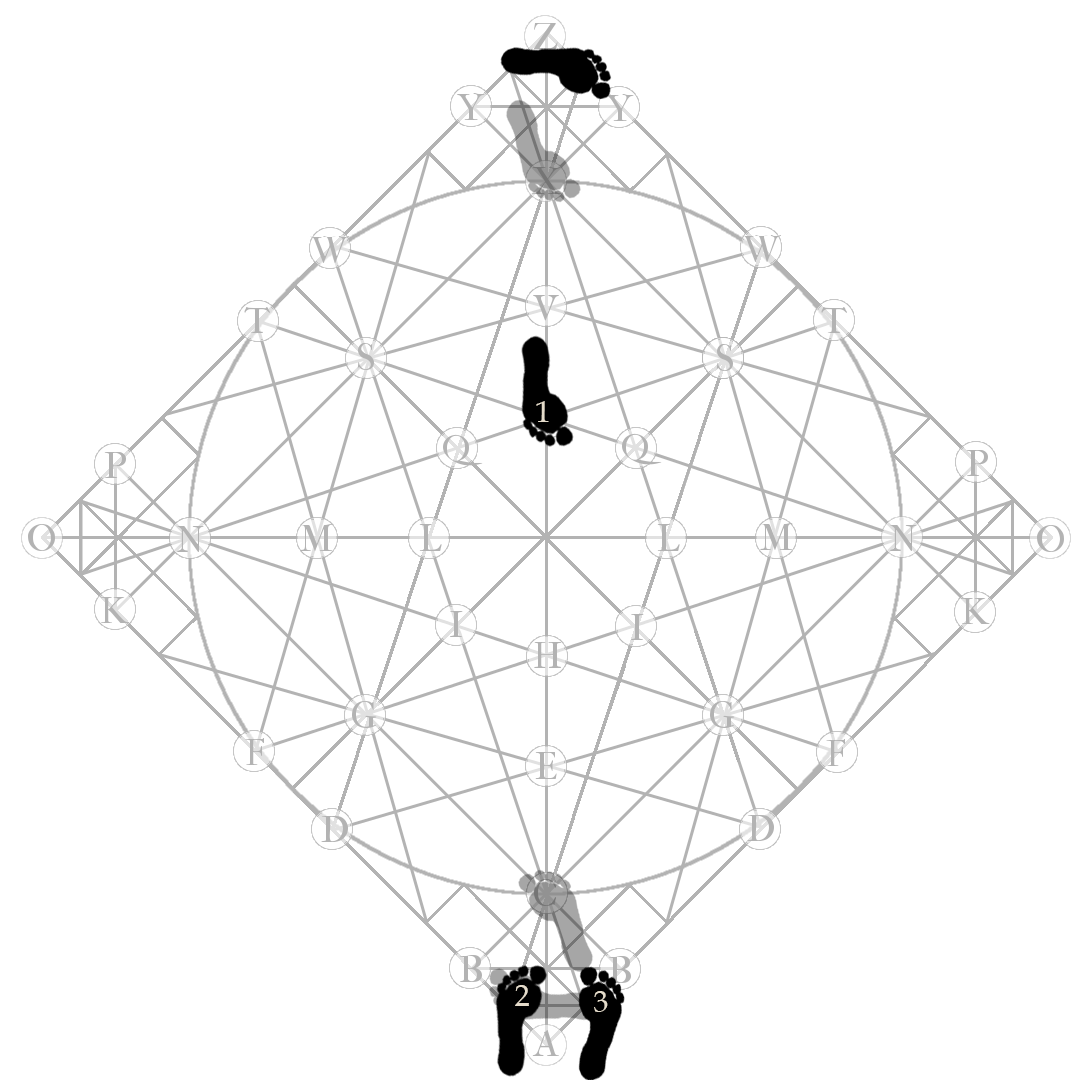


Exercise 9: Circles 9 and 11 (variation 1)
Summary:
- Zachary executes a type 2 feint inside Alexander’s arm.
- Alexander, responds and covers the feint.
- Zachary disengages to Alexander’s low line, continuing his step and attempts a low line thrust to Alexander’s belly, with his hand raised to cover his shoulder.
- Alexander, as Zachary’s foot begins to land, draws his right foot back, squaring his body.
- Alexander draws his hips back and lets his shoulders come forward pushing his hilt down onto Zachary’s sword, which is on Alexander’s outside quillion, pushing Zachary’s sword into an acute angle.
- Alexander passes forward with his left foot and thrusts Zachary to the face.




Exercise 10: Circles 9 and 11 (variation 2)
Summary:
- Zachary executes a type 2 feint inside Alexander’s arm.
- Alexander, responds and covers the feint.
- Zachary disengages to Alexander’s low line, continuing his step and attempts a low line thrust to Alexander’s belly, with his hand raised to cover his shoulder.
- Alexander, as Zachary’s foot begins to land, draws his right foot back, squaring his body.
- Alexander draws his hips back and lets his shoulders come forward pushing his hilt down onto Zachary’s sword, which is on Alexander’s inside quillion, pushing Zachary’s sword into an acute angle.
- Alexander advances with his right foot and thrusts Zachary to the face.




Exercise 11: Circles 9, 12 and 13
Summary:
- Zachary executes a type 2 feint inside Alexander’s arm.
- Alexander, responds and covers the feint.
- Zachary disengages to Alexander’s low line, continuing his step and attempts a low line thrust to Alexander’s belly, with his hand raised to cover his head.
- Alexander, as Zachary’s foot begins to land, draws his right foot back, squaring his body.
- Alexander draws his hips back and lets his shoulders come forward pushing his hilt down onto Zachary’s sword, pushing Zachary’s sword into an acute angle, letting his own point lower to threaten Zachary’s torso, below his hilt.
- Alexander passes forward with his left foot and thrusts Zachary to the torso.




